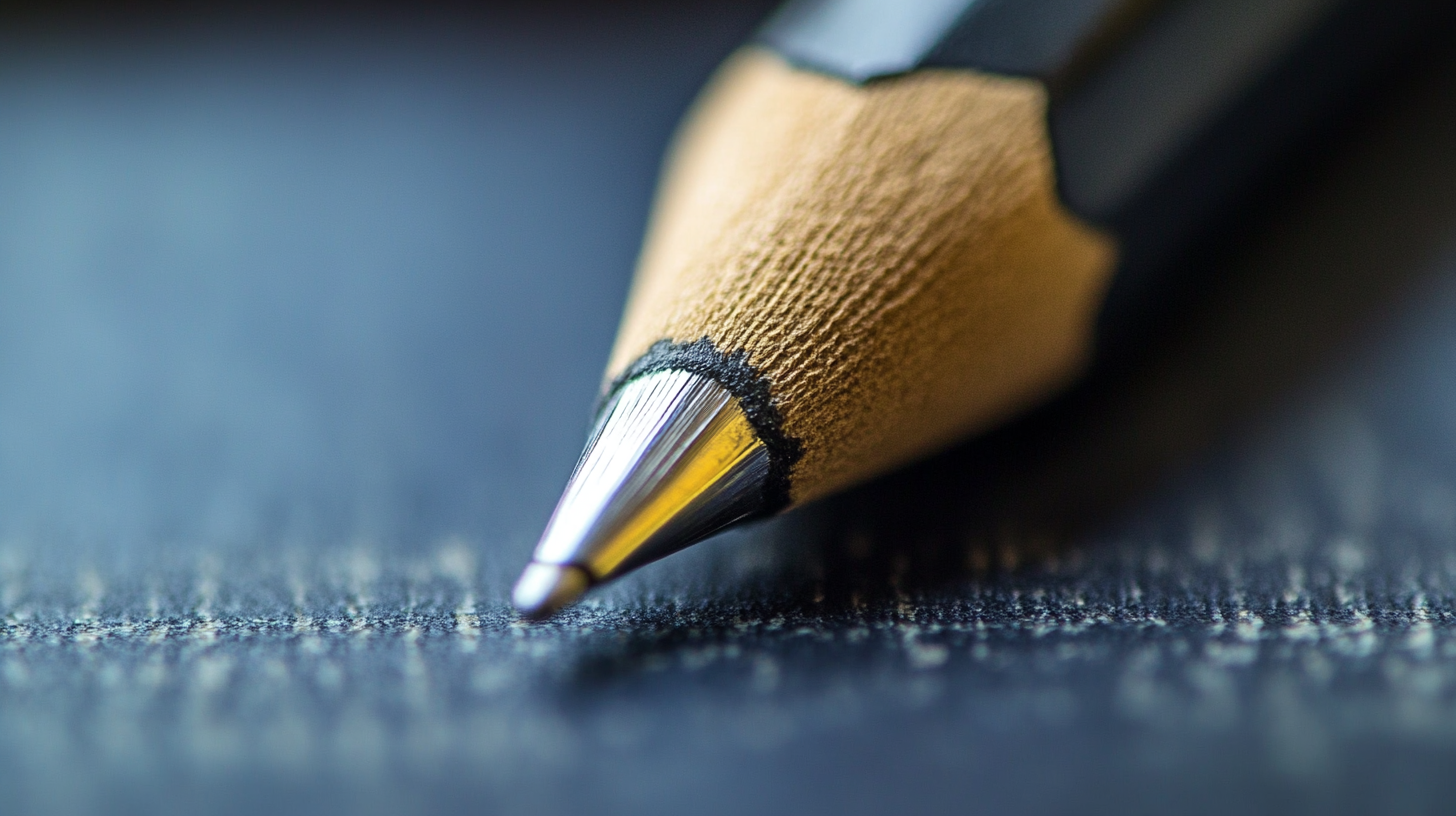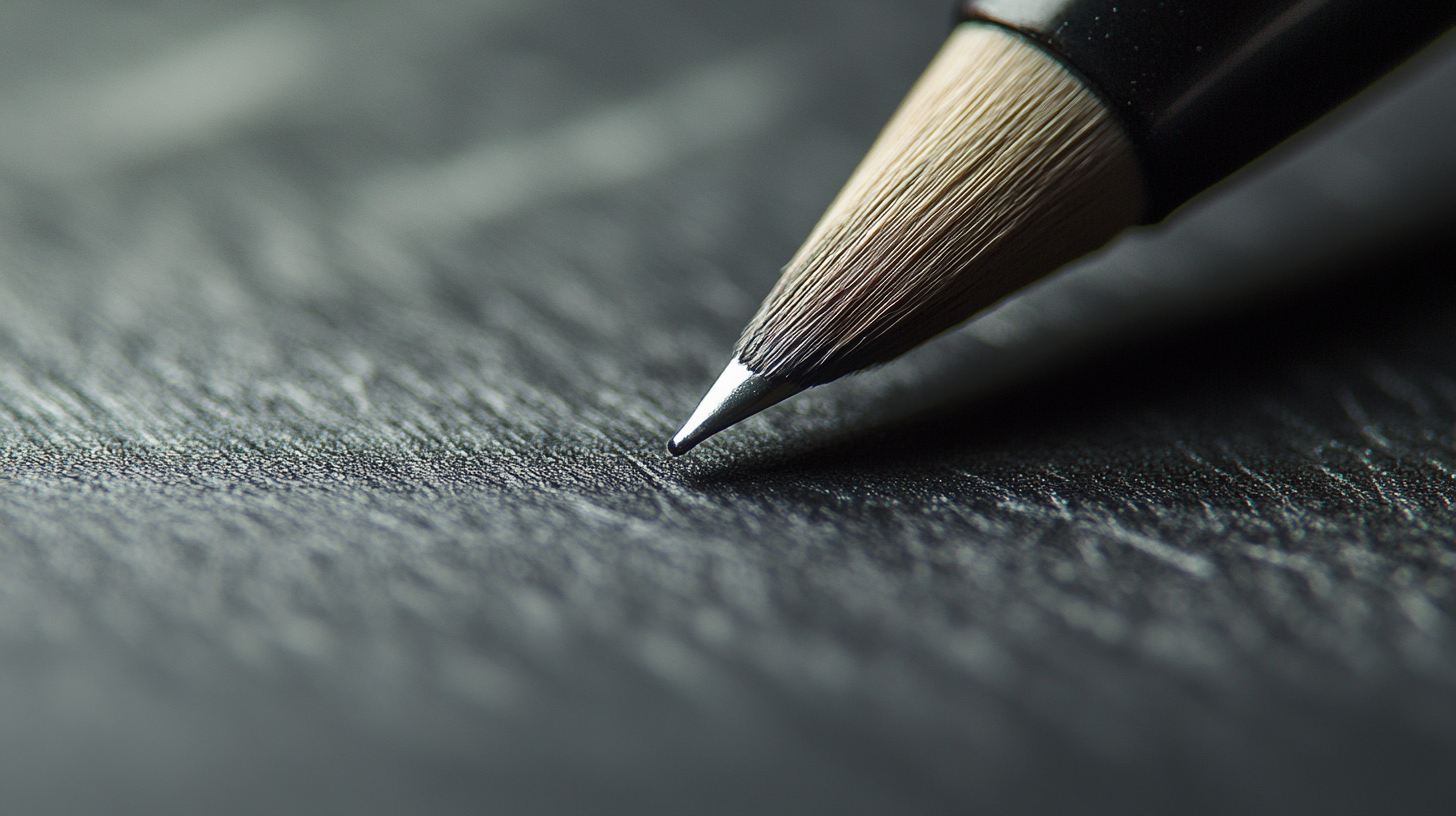Top Strategies for Choosing Between Best Graphite Paper and Carbon Paper for Your Business Needs
In the realm of specialized materials for technical drawing and reproduction, the debate of Graphite Paper Vs Carbon Paper continues to be a crucial consideration for businesses seeking efficiency and quality. According to a recent industry report from IBISWorld, the global stationery manufacturing market is poised to reach a value of $13 billion by 2025, underscoring the growing demand for high-performance materials in various applications. With businesses increasingly relying on precision in drafting, the choice between graphite paper and carbon paper can significantly impact operational outcomes. Graphite paper, known for its smooth application and higher archival quality, has gained traction among artists and professionals, while carbon paper, praised for its cost-effectiveness and ease of use, remains a staple in many traditional settings.

This blog will explore top strategies for selecting the best option to meet your unique business needs, highlighting important factors such as durability, application methods, and manufacturer reliability.
Understanding the Differences: Graphite Paper vs Carbon Paper
When it comes to choosing between graphite paper and carbon paper, understanding their distinct characteristics is essential. Graphite paper is known for its smooth, slightly waxy surface that allows for fine, detailed transfers of images and text. It is particularly favored for art applications, as it enables artists to trace lines with precision while maintaining clean edges. Additionally, graphite paper is often reusable, making it a cost-effective choice for projects that require multiple transfers.
On the other hand, carbon paper has a thicker, more opaque design that leaves a darker imprint when pressure is applied. This makes it ideal for business uses such as creating duplicates of documents, invoices, or receipts. Carbon paper comes in various colors, allowing users to choose based on the desired visibility and contrast. However, it is typically single-use, meaning businesses should consider the volume of copies needed before making a decision. Ultimately, the choice between graphite paper and carbon paper should align with the specific requirements of the project, whether it’s intricate artistic design or efficient document duplication.

Key Factors to Consider When Choosing Graphite or Carbon Paper
When deciding between graphite paper and carbon paper for your business needs, there are several key factors to consider. First, examine the specific applications you require these papers for. Graphite paper is often favored for its ability to provide clean and precise transfers, making it an excellent choice for artists and designers. Conversely, carbon paper is traditionally used for creating duplicate documents, which may be essential for administrative tasks or filing systems.
Another critical factor is the durability and longevity of the products. Graphite paper tends to resist fading over time, ensuring that designs remain intact, even under light exposure. On the other hand, carbon paper can degrade more quickly, potentially leading to issues with document retention. Additionally, consider the environmental impact of your choice, as sustainability is becoming increasingly vital for many businesses. Understanding these aspects can help you make a more informed decision that aligns with your operational needs and ethical considerations.
Applications and Benefits: When to Use Graphite Paper Over Carbon Paper
When deciding between graphite paper and carbon paper for specific business applications, it’s crucial to understand the distinct benefits each offers. Graphite paper is ideal for projects that require precision and clean transfer. Its smooth texture ensures that marks are sharp and easily readable, making it suitable for intricate designs in art, drafting, and technical drawings. Additionally, graphite paper is less messy and does not smear, which is a significant advantage for clean environments such as design studios and architectural firms.
On the other hand, carbon paper excels in situations where speed and bulk transfer are necessary. It is often used in bookkeeping and administrative tasks where multiple copies of a document are needed quickly. Carbon paper’s ability to produce several duplicates in one go is invaluable for invoices, receipts, and other forms that require multiple copies. However, the downside is that carbon paper can smear, and the ink may be less precise compared to graphite paper. Thus, understanding the specific requirements of your task can help you choose the right type of transfer paper to enhance productivity and ensure quality outcomes.
Top Strategies for Choosing Between Best Graphite Paper and Carbon Paper for Your Business Needs - Applications and Benefits: When to Use Graphite Paper Over Carbon Paper
| Feature | Graphite Paper | Carbon Paper |
|---|---|---|
| Material Composition | Graphite-based | Carbon black pigment |
| Transfer Quality | Clean and precise | May smudge easily |
| Applications | Art, drafts, pattern making | Form filling, simple sketches |
| Durability | Tears easily but maintains transfer quality | More resilient, less prone to tearing |
| Cost Effectiveness | Usually higher due to quality | Generally cheaper |
| Environmental Impact | Less toxic materials | Produces harmful fumes when burned |
| Best Use Case | Artistic projects requiring precision | Quick sketches and temporary transfers |
Cost-Effectiveness: Analyzing Price Points and Value for Your Business
When considering the cost-effectiveness of graphite paper versus carbon paper for business applications, it's essential to analyze not only the initial price points but also the value these materials provide in terms of efficiency and output quality. While graphite paper often comes at a higher upfront cost, it offers durability and versatility that can lead to long-term savings, especially for businesses involved in intricate designs or high-volume projects. Carbon paper, while generally less expensive, may not deliver the same level of precision or longevity, potentially resulting in additional costs over time due to the need for more frequent replacements.
In the context of rising market demands—exemplified by the booming container housing industry expected to grow significantly—making an informed choice between these two options is crucial. Businesses should consider not just the immediate costs but also how these products fit into their broader operational strategies. By investing in the right type of paper, companies can enhance their productivity, ensure better customer satisfaction, and ultimately contribute to their bottom line while navigating the evolving market landscape. This holistic approach to cost-effectiveness can provide a competitive edge as industries increasingly lean on innovative solutions for traditional tasks.
Specialized Solutions: Tailoring Paper Type to Specific Industries and Needs
Choosing the right type of transfer paper can significantly impact efficiency and quality across various industries. While graphite paper is typically favored for its clean, precise lines, carbon paper offers an effective solution for making multiple copies simultaneously. Understanding the specific needs of your industry will help determine which type is more suitable. For instance, industries that require detailed art reproductions may lean towards graphite paper, while administrative environments that need duplicates might find carbon paper more beneficial.
**Tips:** Consider the thickness and texture of the paper based on your application. For intricate designs, opt for high-quality graphite paper, which provides better control for artists and designers. Conversely, if your business requires rapid documentation, look for carbon paper that offers a balance between visibility and smudge resistance. Additionally, assess the compatibility of each type with the tools used in your operations, such as pens and drawing instruments, to ensure optimal performance.
